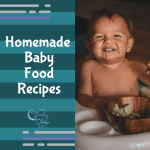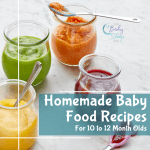Vegetables — what’s not to love? Veggies are generally low in fat and calories but are packed full of vitamins, minerals, and disease-fighting antioxidants. Your baby needs all the nutrition vegetables have to offer — use the vegetable puree recipes below to make sure she gets it!
For information on when to introduce specific fruits into your baby’s diet, along with serving sizes, visit our solid food charts.
For information on whether or not you should invest in organic veggies, visit our post comparing organic and non-organic produce.
For tips on how to cook your vegetables, visit our cooking techniques page.
For tips on how to puree your vegetables, visit our pureeing techniques page.
Enough background information — on to the cooking!
Homemade Green Bean Puree (introduce at 4-6 months)

- 16 oz. 1 pound fresh green beans (can also use frozen)
- Wash green beans and snap off the ends (skip this step if using frozen).
- Boil or steam green beans until tender. If boiling, reserve the cooking water.
- Immediately after cooking, plunge green beans into a bowl or sink full of ice water. This will help stop the cooking process.
- Once the green beans are cool, puree them, adding breastmilk, formula, or water (use cooking water if green beans were boiled) to achieve your desired consistency.
It’s virtually impossible to create a smooth puree from green beans, since the skins tend to be tough. For this reason, you may want to consider waiting until your baby’s old enough to handle chunkier textures before introducing green beans.
Homemade Carrot Puree (introduce at 7-8 months)

- 16 oz. 1 pound fresh carrots (can also use frozen)
- Wash carrots. Peel and cut into small chunks (skip this step if using frozen).
- Boil or steam carrots until tender. If boiling, DO NOT reserve cooking water. Adding the cooking water back into your carrot puree increases your baby’s risk of nitrate poisoning
- Immediately after cooking, plunge carrots into a bowl or sink full of ice water. This will help stop the cooking process.
- Once the carrots are cool, puree them, adding breastmilk, formula, or water (use cooking water if carrots were boiled) to achieve your desired consistency.
Homemade Pea Puree (introduce at 7-8 months)

- 16 oz. 1 pound fresh peas (can also use frozen)
- Open pea pods and scrape out the peas (skip this step if using frozen).
- Boil or steam peas until tender. If boiling, reserve the cooking water.
- Immediately after cooking, plunge peas into a bowl or sink full of ice water. This will help stop the cooking process.
- Once the peas are cool, puree them, adding breastmilk, formula, or water (use cooking water if peas were boiled) to achieve your desired consistency.
Homemade Broccoli (introduce at 9-10 months)
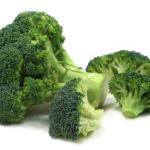
- 16 oz. or 2-3 heads of fresh broccoli (can also use frozen broccoli florets)
- Wash broccoli. Cut florets from stems; reserve the florets and discard the stems (since florets are more tender and easier for baby to eat than stems). Skip this step if using frozen.
- Boil of steam broccoli until tender. If boiling, reserve the cooking water.
- Immediately after cooking, plunge broccoli into a bowl or sink full of ice water. This will help stop the cooking process.
- Once the broccoli is cool, puree it, adding breastmilk, formula, or water (use cooking water if broccoli was boiled) to achieve your desired consistency.
Now that your baby’s older, consider lightly mashing the broccoli, leaving some chunks. You could even cut the broccoli into tiny pieces and encourage him to try picking it up and feeding himself.
Homemade Sweet Potato/Yam Puree (introduce at 4-6 months)
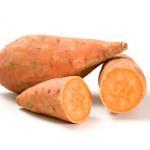
- Several medium sweet potatoes
Baking Method:
- Wash sweet potatoes, then prick all over with a fork.
- Wrap tightly in foil and bake in a 400 degree oven for 45-60 minutes, or until soft.
- Allow sweet potatoes to cool completely. Cut sweet potatoes in half and scoop out into a dish.
- Puree the sweet potato mixture until smooth, adding breastmilk, formula, or water to achieve your desired consistency.
Boiling/Steaming Method:
- Wash and peel sweet potatoes, then cut them into small chunks.
- Boil or steam the sweet potato pieces until tender. Allow pieces to cool completely.
- Puree the sweet potato pieces until smooth, adding breastmilk, formula, or water (if boiling, use the cooking water) to achieve desired consistency.
Homemade Squash Puree (introduce at 4-6 months)
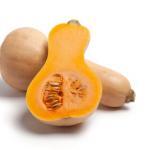
- One large (or 2 medium winter squash (like acorn or butternut))
- Cut the squash in half. Scoop out the seeds.
- Pour a small amount of water (just enough to cover) into the bottom of a baking sheet. Place the squash halves, cut side down, on the baking sheet.
- Bake for 30-45 minutes in a 400 degree oven. It’s is done when the squash is tender and the tough outer skin begins to wrinkle and soften.
- Allow the squash halves to cool. Scoop out the squash and puree until smooth, adding breastmilk, formula, or water to achieve your desired consistency.
Steamed Spinach, Kale, or Collard Greens (introduce at 9-10 months)
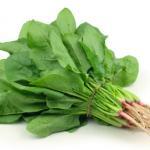
- 16 oz. 1 pound fresh spinach, kale, or collard greens
- Wash spinach or greens carefully. If using kale or collard greens, carefully remove the tough stem that runs down the middle of each leaf.
- Steam the spinach or greens in a steamer basket until tender.
- Remove steamer basket and allow greens to cool completely.
- Puree greens, adding fresh water to achieve desired consistency.
Once you’ve made a veggie puree, you may find yourself wondering how you’re going to store it. For tips on proper food storage, visit our food storage page.
Everything You Need To Know About Starting Solids – All In One e-Book!
 What if you could find everything you needed to know about starting your baby on solid foods – when it’s best to start solids, how to introduce solids, complications, food allergies, etc. – in one easy-reference guide? Now you can! Your Baby’s Start To Solid Foods: A Comprehensive Guide will walk you through every step of starting solids. Plus, your e-Book package includes several bonus materials, designed to maximize your success in starting solids. You’ll get a thorough guide to treating constipation, a dietitian’s advice on how to avoid 5 common solid-foods mistakes, and a weekly meal plan for your baby’s first year. Grab your e-Book today, and ensure your baby has the healthiest possible start to solid foods!
What if you could find everything you needed to know about starting your baby on solid foods – when it’s best to start solids, how to introduce solids, complications, food allergies, etc. – in one easy-reference guide? Now you can! Your Baby’s Start To Solid Foods: A Comprehensive Guide will walk you through every step of starting solids. Plus, your e-Book package includes several bonus materials, designed to maximize your success in starting solids. You’ll get a thorough guide to treating constipation, a dietitian’s advice on how to avoid 5 common solid-foods mistakes, and a weekly meal plan for your baby’s first year. Grab your e-Book today, and ensure your baby has the healthiest possible start to solid foods!



